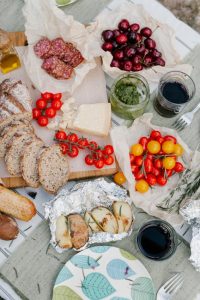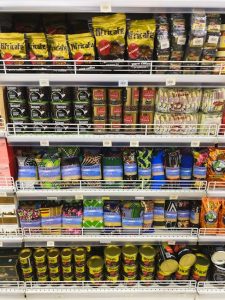The Art of Layering Flavors: Unlocking the Secrets of the Three-Layer Cake
The humble cake has been a centerpiece of celebrations for centuries, and its sweetness and versatility make it a beloved treat across cultures. But among the many variations that grace our tables, the three-layer cake holds a special place. This iconic confection, with its distinct layers of flavor and texture, embodies a delicate balance between simplicity and sophistication, inviting us to savor each bite.
More than just a dessert, the three-layer cake represents an artful expression of culinary creativity. Its layered structure allows for exploring diverse flavor combinations, offering a symphony of taste in every slice. The possibilities are endless, from classic vanilla and chocolate to more adventurous pairings like lemon and poppy seed, making the three-layer cake a canvas for culinary experimentation.
The appeal of the three-layer cake extends beyond its aesthetic beauty and intricate flavor profiles. It evokes a sense of nostalgia, reminding us of childhood birthdays, wedding receptions, and other cherished moments. Like a chapter in a story, each layer tells a part of the cake’s history, culminating in a delectable narrative that engages all our senses.
The Science Behind the Layers
The beauty of a three-layer cake lies not only in its appearance but also in its construction. Each layer is a carefully crafted element contributing to the overall taste and texture. The first layer, often a dense and rich cake, provides a solid foundation and a burst of flavor. This layer is typically made with more butter, eggs, and flour, resulting in a dense and moist texture. It often serves as the base for the cake, providing structural support for the subsequent layers. The second layer, usually a lighter and airier cake, adds contrast and complexity. This layer is typically made with more leavening agents, such as baking powder or baking soda, resulting in a lighter and fluffier texture. It provides a welcome contrast to the richness of the first layer, creating a balance of textures and flavors. The third layer, typically a delicate and flavorful filling, combines the whole confection. This layer can be a simple buttercream frosting, a decadent ganache, or a refreshing fruit compote. It adds a final touch of sweetness and moisture, completing the symphony of flavors and textures.
The key to a successful three-layer cake is achieving a harmonious balance between the layers. The flavors should complement each other, creating a symphony of taste that lingers on the palate. For example, a classic vanilla cake layered with chocolate buttercream frosting offers a familiar and comforting combination. The vanilla has subtle sweetness, while the chocolate adds a rich and decadent note. The textures should also be carefully considered, offering a delightful interplay between the dense and the light, the crisp and the smooth. A thick chocolate cake layered with a light and airy whipped cream frosting provides a satisfying contrast in texture, creating a multi-sensory experience for the palate.
The Art of Flavor Combinations
The three-layer cake offers a boundless playground for culinary creativity, allowing bakers to experiment with countless flavor combinations. Classic pairings like vanilla and chocolate, lemon and poppy seed, red velvet, and cream cheese remain popular, while more adventurous combinations like lavender and honey or chai spice and caramel are gaining traction among contemporary bakers. Personal preferences, seasonal ingredients, and cultural traditions influence the selection of flavor combinations. A summer wedding cake may feature light and refreshing flavors like lemon and elderflower, while a winter celebration might call for more decadent flavors like chocolate and espresso. The possibilities are endless, limited only by the baker’s imagination and the availability of ingredients.
For instance, a baker might create a cake inspired by a particular region or culture. A cake inspired by the flavors of the Mediterranean might feature layers of olive oil cake, lemon curd, and a sprinkle of pistachios. A cake inspired by the flavors of Asia might feature layers of pandan cake, coconut cream, and a drizzle of mango sauce. The possibilities are endless; the only limit is the baker’s imagination.
Beyond the Basics: Elevating the Three-Layer Cake
While the classic three-layer cake recipe provides a solid foundation, there are countless ways to elevate this iconic dessert. Adding a decorative element like edible flowers, a drizzle of chocolate ganache, or a sprinkle of colorful sprinkles can transform the cake into a masterpiece of culinary art. Edible flowers, such as pansies or violas, add a touch of elegance and delicate flavor to the cake. A drizzle of chocolate ganache, made with melted chocolate and cream, adds a rich and decadent touch. A sprinkle of colorful sprinkles adds a playful and whimsical touch, making the cake more appealing to children and adults alike.
Using high-quality ingredients and artisanal techniques can further enhance the three-layer cake. Sourcing locally grown fruits and using organic eggs and butter can elevate the flavor profile and add an element of sophistication to the dessert. Similarly, piping, fondant work, and intricate cake decorating can elevate the cake from a simple dessert to a work of art. Piping techniques, such as rosettes, swirls, and borders, can add a touch of elegance and sophistication to the cake. Fondant work, such as creating intricate designs or figures, can transform the cake into an actual work of art. Intricate cake decorating, such as using airbrushing or sugar flowers, can elevate the cake to a truly breathtaking artistry.
The three-layer cake, with its layers of flavor, texture, and history, is a testament to culinary creativity’s enduring power. It’s a canvas for bakers to express their artistry, blending ingredients and techniques to create a symphony of taste. Each layer tells a story, whether it’s a chocolate ganache’s richness, the whipped cream frosting’s lightness, or the tangy zest of a citrus filling. The three-layer cake transcends mere dessert; it becomes a conversation starter, a celebration of shared moments, and a reminder of the joy of creating something beautiful and delicious.
The beauty of the three-layer cake lies in its adaptability. It can be tailored to any occasion, from a casual gathering to a formal event. A simple vanilla cake with buttercream frosting can be dressed with fresh fruit and edible flowers. In contrast, a more elaborate cake featuring intricate piping and fondant decorations can be the centerpiece of a grand celebration. The possibilities are endless, limited only by the baker’s imagination and the desire to create something extraordinary.
Beyond the visual appeal, the three-layer cake offers a unique opportunity to explore the interplay of flavors. The combination of distinct layers allows for a gradual progression of taste, creating a multi-dimensional experience for the palate. For example, a classic chocolate cake layered with a raspberry filling and vanilla buttercream frosting provides a delightful contrast of sweetness, tartness, and richness. This interplay of flavors elevates the three-layer cake from a simple dessert to a culinary masterpiece.
Whether you’re a seasoned baker or a curious novice, the three-layer cake offers a rewarding challenge and a delicious reward. Embrace the art of layering flavors, experiment with diverse combinations, and let your creativity flourish as you create your unique masterpiece. Don’t be afraid to push the boundaries, try new ingredients, and explore different techniques. The journey of baking a three-layer cake is as much about the process as it is about the final product. Each step, from measuring ingredients to decorating the finished cake, offers an opportunity to learn, grow, and discover new possibilities.
So, gather your ingredients, don your apron, and embark on a culinary adventure. With a bit of patience, practice, and a dash of imagination, you can bake a three-layer cake that will delight your senses and leave a lasting impression. Remember, the journey is just as important as the destination, so savor every step of the process and enjoy the fruits of your labor. The three-layer cake is more than just a dessert; it’s a testament to the power of creativity, the joy of sharing, and the enduring appeal of a culinary masterpiece.

Photo by Nataliya Vaitkevich on Pexels






